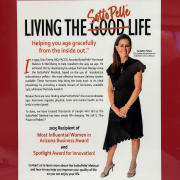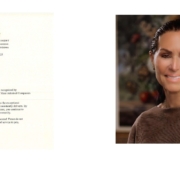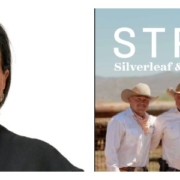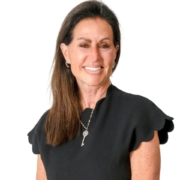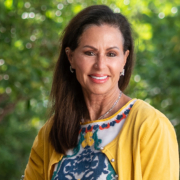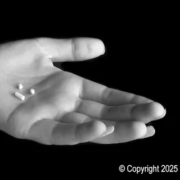From Shattered Hearts to Radiant Hope: CarolAnn Tutera’s Roadmap for Reclaiming Joy After Loss
Thrive Global & Medium Articles by Stacey Chillemi – Original Articles:
https://staceychillemi.medium.com/from-shattered-hearts-to-radiant-hope-carolann-tuteras-roadmap-for-reclaiming-joy-after-loss-d6275947d607
https://community.thriveglobal.com/from-shattered-hearts-to-radiant-hope-carolann-tuteras-roadmap-for-reclaiming-joy-after-loss/
Discover how honoring every tear can transform raw grief into a fierce, purpose-driven joy that lights the path forward.
Healing isn’t about erasing the love you’ve lost — it’s about expanding your heart so you can carry that love forward into a new chapter.
— CarolAnn Tutera
Grief rearranges life’s blueprint in an instant, yet within that rubble often lies the raw material for profound reinvention. Few embody this truth more vividly than CarolAnn Tutera — CEO, widow, and advocate for holistic healing — whose journey from devastating loss to renewed purpose is nothing short of transformative. In today’s fast-paced world, we rarely pause long enough to face heartache head-on, let alone mine it for wisdom. CarolAnn does both with disarming candor, proving that grief and growth can coexist, and even collaborate, to craft a richer, more resilient self.
In this conversation with Stacey Chillemi, you’ll discover the tools and mindsets CarolAnn used to alchemize sorrow into service: grounding rituals that settle a racing heart, affirmations that rebuild shattered self-esteem, and “joy-scouting” habits that coax laughter back into daily life. Whether you’re navigating fresh loss, supporting someone who is, or simply seeking a deeper well of gratitude, her story offers a roadmap from heartbreak to hope — one small, courageous choice at a time.
***
Thank you so much for joining us! Our readers would love to get to know you a bit better. Can you tell us a bit about your backstory?
I was raised in a bustling Midwestern household where dinner-table debates, Sunday-morning pancakes, and the mantra “leave things better than you found them” shaped my worldview. Decades later, I married Dr. Gino Tutera, an OB-GYN-turned-hormone-pioneer whose passion for preventive medicine lit my own. Together, we built a thriving practice that restores energy and purpose for thousands of women and men. When Gino died nine years ago, every role I knew — wife, co-founder, best friend — evaporated in one phone call. My healing journey has been equal parts grief recovery, identity excavation, and legacy building. Today, I still run our company, but I’ve layered in grief coaching, podcasting, and speaking because I believe heartache can become the birthplace of extraordinary purpose.
Grief can feel like an endless tunnel. What was the very first moment you realized, “Something has to change — I’m ready to move forward”?
That moment was subtle, almost imperceptible. About four months after Gino passed, I woke up and noticed the silence wasn’t as deafening. I still felt the ache, but it no longer swallowed my entire chest. Instead of curling back under the covers, I sat at my vanity, looked myself in the eyes, and said aloud: “You’re still here — so what now?” I didn’t have an answer, but the question itself cracked open a window. I decided that very day to schedule a counseling session, join a local widow support group, and walk my dogs at sunrise instead of after dark. Those three micro-choices became my first stitches in a brand-new life quilt.
You stress that feeling the pain is non-negotiable. Why is that step so crucial?
Grief is stored not just in the mind but in our fascia, muscles, and even our hormones. When you bypass those feelings, they simply burrow deeper, manifesting later as anxiety, insomnia, or explosive anger over trivial things. By allowing the sobs to come, by journaling the unspeakable, by admitting “I’m jealous of people who still have their spouses,” you permit your nervous system to metabolize emotional toxins. Think of it like sweating during a workout: the perspiration may be uncomfortable, but afterward you feel lighter, clearer, and able to move freely again. Allowing pain to surface is not self-indulgent; it’s metabolic hygiene for the soul.
What did those first quiet mornings without Gino feel like, and how did you give yourself permission simply to breathe?
They felt surreal, as if the universe had turned down the volume on color itself. I would reach across the mattress, find emptiness, and instantly spiral. A friend — herself a widow — texted me at 6 a.m. daily with a single line: “You’re loved. Breathe. Reply only if you want to.” Sometimes I sent a heart emoji; sometimes I called her and wordlessly cried while she brewed her coffee. To anchor my breath, I started “three-point grounding”: toes on the floor, one hand over my heart, the other on my diaphragm. On the inhale, I counted four, on the exhale, six. That longer exhale nudged my body from fight-or-flight into rest-and-repair. Over weeks, it became an automatic rescue when panic swelled.
You call hope a skill. How does someone practice it when everything looks dark?
Hope begins as a borrowed asset. You might not believe better days are coming, but you can borrow the belief of someone who does — through memoirs, podcasts, spiritual texts, or a mentor who’s two steps ahead. Next, set the bar comically low: “Today I hope to shower and drink water.” When you succeed, your brain releases dopamine, proving that hope was justified. That tiny win enlarges the bar for tomorrow. Lastly, future-cast in micro-images: envision yourself laughing at a café two months from now. Your subconscious can’t tell imagination from reality; it begins constructing pathways to deliver what you repeatedly picture.
Affirmations aside, what tiny morning habit shifted your mindset the most?
I created a “joy tray” on my nightstand: a rose-quartz heart, a rollerball of grapefruit essential oil, and a card that reads, “What adventure awaits?” Before I even stand, I press the oil to my wrists, inhale, and ask that question. Sometimes the answer is mundane — trying a new creamer — but the ritual trains my brain to expect delight. Over time, that expectancy has acted like Velcro for serendipity: strangers buy my coffee, rainbow sunsets appear on tough days, and podcast guests arrive exactly when their message is needed.
Gratitude clearly powers your day. How did it help you navigate loss?
My initial gratitude lists felt forced — “Thanks for hot water, I guess.” But neuroscience shows that naming even ordinary gifts drops cortisol and boosts immune function. So I persisted. Eventually, I graduated from lists to “gratitude storytelling.” Instead of writing “I’m grateful for my dogs,” I’d pen a 90-second vignette: “Today, Coco trotted into the kitchen, dragging my slipper, tail wagging like she solved world peace.” Reliving tiny scenes through sensory detail marinates the nervous system in serotonin, lengthening the afterglow of positivity. That practice didn’t erase grief, but it dramatically expanded my bandwidth for joy to coexist with sorrow.
Many women struggle with self-care guilt. How did you break that pattern?
I used a mental trick called The Best-Friend Flip. Whenever guilt whispered that my bubble bath or solo dinner was selfish, I imagined my dearest friend in my position. Would I begrudge her an hour of peace? Of course not. I’d hand her fluffy towels and a scented candle! Realizing the double standard helped me recode self-care as an act of integrity: I can’t pour into patients, employees, or family from an arid well. The more resourced I am, the better I love.
Which self-talk habit most effectively rewired you from grief to growth?
Walking mantras. Every afternoon, I laced up sneakers and circled the block, swinging my arms intentionally — a motion that stimulates both brain hemispheres, similar to EMDR therapy. I’d repeat rhythmic cues: Forward, CarolAnn. You’re guided. You’re safe. Over weeks, those strides carved a neural groove so deep that, even indoors, I’d catch myself thinking Forward, CarolAnn whenever anxiety flared. It became an embodied compass pointing me toward action instead of rumination.
How did you curate a support circle that could truly hold space for your healing?
I adopted a lighthouse filter: Do I leave this person feeling steadied or storm-tossed? After the initial avalanche of condolences, I noted who still texted at month two, who remembered my wedding anniversary at year one, and who sat with me in silence instead of dispensing platitudes. Those became my lighthouse friends. Simultaneously, I expanded my ecosystem through pickleball leagues, women’s business networks, and a quarterly grief retreat. Diverse circles ensured I wasn’t leaning on any one group too heavily and reminded me I’m multifaceted — griever, CEO, sister, dog mom, adventurer.
You mentioned embracing your “inner child.” What does keeping her alive look like in practice?
My inner eight-year-old adores color, movement, and harmless rebellion. So I keep metallic gel pens in my purse for café doodling. I host “pancakes for dinner” nights where friends wear pajamas at 6 p.m. I organize my rubber-duck collection into holiday tableaux — think Valentine ducks in February, pirate ducks for Talk-Like-a-Pirate Day. These micro-acts tell my nervous system, “We’re still creative, spontaneous, safe.” That safety loosens the grip of hyper-vigilance that grief can impose.
When anniversaries or sudden memories hit, what’s in your emotional first-aid kit?
- Permission slips. I literally write, “I hereby give myself permission to decline Thanksgiving 2025.” Seeing it in ink legitimizes the choice.
- Sensory anchors. Lavender oil, fleece blanket, the Barry White playlist Gino and I danced to while cooking Sunday marinara.
- Meaning-making ritual. I light a candle, speak one gratitude for Gino’s influence that day, and ask, “How can I embody that quality now?” Grief becomes a conversation rather than a monologue.
Can you recall the first time you genuinely laughed again, and how can listeners invite more of those moments?
The laugh ambushed me. A year after the loss, a friend dared me to barrel-roll down a hill. Grass stains, disheveled hair — the works. Mid-roll, gravity flipped me onto my back, and this primal belly laugh erupted. It startled me, but also baptized me back into aliveness. To invite laughter, proactively schedule novelty: improv classes, stand-up comedy nights, toddler nephews who insist you wear fairy wings. Laughter isn’t a betrayal of your loved one; it’s proof their legacy still fuels light in you.
For someone who feels stuck, what one micro-action can make them 1 percent lighter today?
Perform a mirror hug. Stand tall, meet your own gaze, wrap arms around yourself left-heart to left-heart, and state your full name followed by: “I’m committed to your healing.” Research shows self-soothing touch releases oxytocin, lowering stress and amplifying self-compassion in under 30 seconds.
Paint a picture of what thriving might look like 12 months into a grief journey.
Thriving at one year rarely means “all better.” Instead, imagine this: You wake on the anniversary date, the ache is present, yet you still keep your brunch date with a new friend from your hiking club. You talk about a book you’re reading, you tear up at a song in the car, you bake your partner’s favorite cookies, and share them at the office. By evening, you realize you experienced sorrow and connection, and competence all in one day. That emotional agility — that’s thriving.
What daily movement or ritual helped you release stored emotions?
Box breathing paired with literal boxing. I bought a freestanding bag for my garage. Four-count inhale, four-count hold, four-count exhale while delivering four decisive jabs. The rhythmic impact shook loose lodged anger, while the breath pattern kept my nervous system regulated. Afterwards, I’d journal whatever surfaced, sip chamomile, and end with five minutes of legs-up-the-wall — a restorative yoga inversion that tells the body, “The battle is over.”
How did helping others become part of your own recovery?
When one widow in my support group said, “Your story made me feel less crazy,” something clicked. I began hosting free Zoom circles, offering hormone-balance webinars for grieving women struggling with mood swings, and interviewing experts on my podcast. Service transformed my pain from a closed loop into a conduit of hope. Neuroscience confirms it: acts of contribution release oxytocin and dopamine, creating a feedback loop of purpose that accelerates personal healing.
If readers remember just one takeaway from our chat, what should it be?
Be relentlessly kind to yourself. Self-compassion isn’t a bumper-sticker slogan — it’s the biochemical antidote to despair. Talk to your reflection the way you’d comfort a trembling child: “I’m right here, and we’re going to figure this out together.” Once you master that inner dialogue, every external challenge becomes infinitely more navigable.
How can our readers further follow your work online?
Thank you so much for having me! If you’d like to dive deeper into my approach to holistic wellness, please visit my website: https://www.sottopelletherapy.com
I share daily tips, research insights, and a dash of inspiration on social media — come connect with me here:
Instagram: https://www.instagram.com/sottopelletherapy/
Facebook: https://www.facebook.com/hormonereplacement
X (Twitter): https://x.com/sottopelle
YouTube: https://www.youtube.com/user/SottoPelleTherapy
CarolAnn, thank you for opening your heart and sharing such practical, soulful wisdom. Your journey proves grief and growth can occupy the same breath.
Thank you, Stacey. Conversations like this are sacred — the more openly we talk about loss, the less alone any of us has to feel.

A visionary in hormone health and holistic well-being, CarolAnn Tutera is the CEO of SottoPelle Therapy and a sought-after speaker on resilience after loss. Following the passing of her husband and business partner, she transformed her grief into a blueprint for others, combining decades of healthcare leadership with heartfelt coaching that guides people from heartbreak to hope. Whether she’s training physicians, hosting her wellness podcast, or leading grief-support workshops, she brings equal parts clinical expertise and compassionate candor to every audience.




